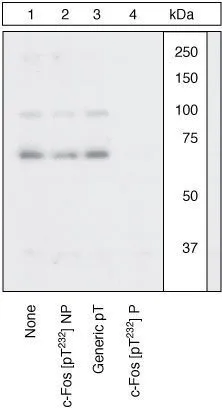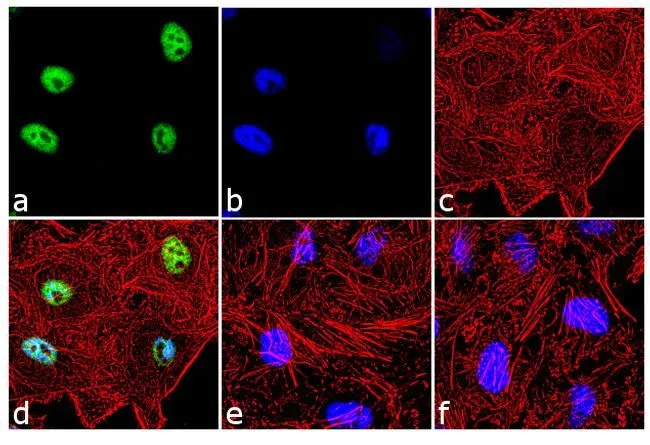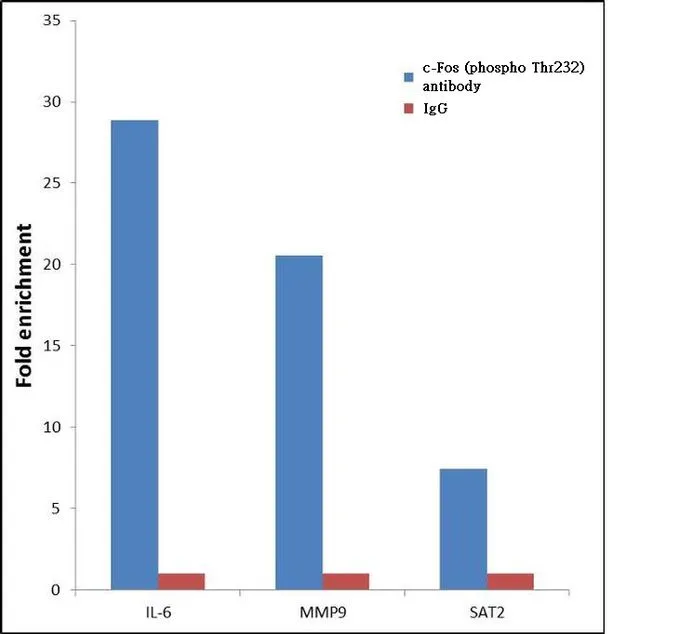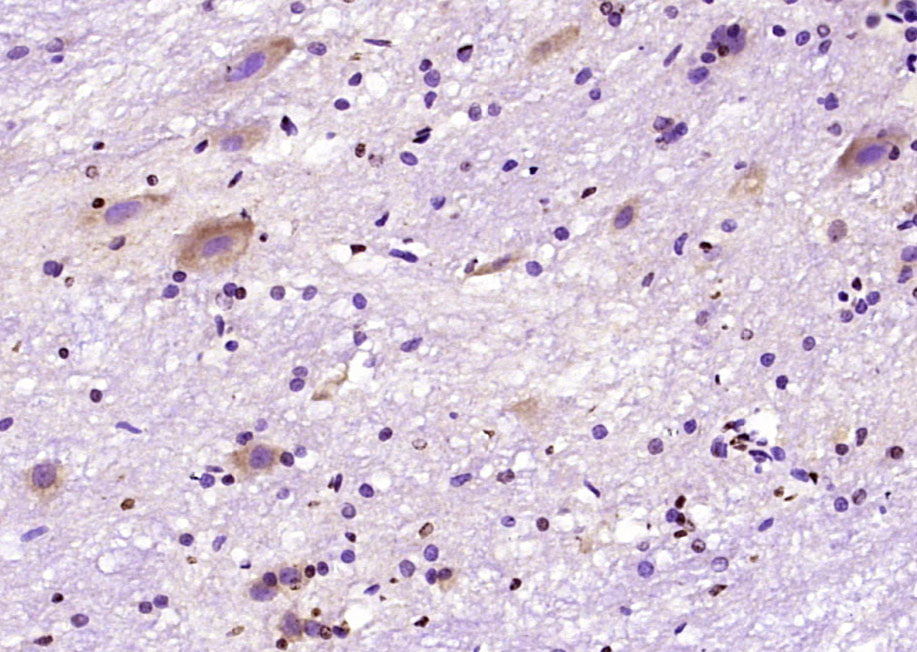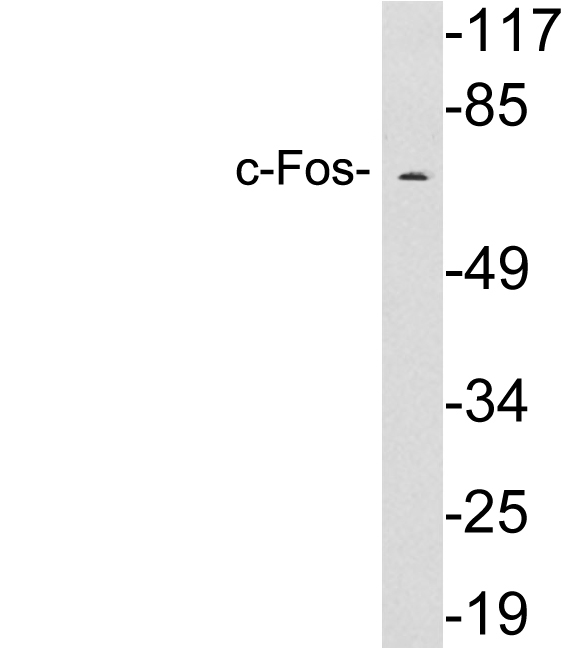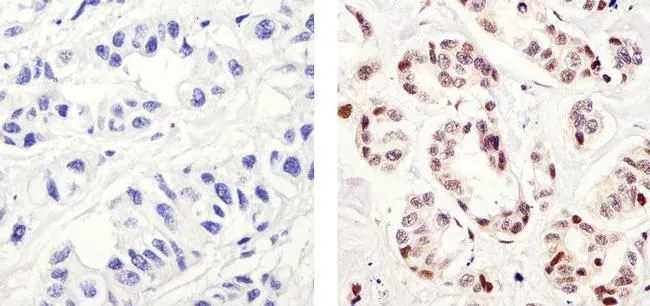
IHC-P analysis of human breast carcinoma tissue using GTX17933 c-Fos (phospho Thr232) antibody. Right : Primary antibody Left : Negative control without primary antibody Antigen retrieval : 10mM sodium citrate (pH 6.0), microwaved for 8-15 min Dilution : 1:20
c-Fos (phospho Thr232) antibody
GTX17933
ApplicationsImmunoFluorescence, Western Blot, ChIP Chromatin ImmunoPrecipitation, ImmunoCytoChemistry, ImmunoHistoChemistry, ImmunoHistoChemistry Paraffin
Product group Antibodies
ReactivityHuman
TargetFOS
Overview
- SupplierGeneTex
- Product Namec-Fos (phospho Thr232) antibody
- Delivery Days Customer9
- Application Supplier NoteICC/IF: 1:250. IHC-P: 1:20. ChIP assay: 1-3 microg/106 cells. *Optimal dilutions/concentrations should be determined by the researcher.Not tested in other applications.
- ApplicationsImmunoFluorescence, Western Blot, ChIP Chromatin ImmunoPrecipitation, ImmunoCytoChemistry, ImmunoHistoChemistry, ImmunoHistoChemistry Paraffin
- CertificationResearch Use Only
- ClonalityPolyclonal
- ConjugateUnconjugated
- Gene ID2353
- Target nameFOS
- Target descriptionFos proto-oncogene, AP-1 transcription factor subunit
- Target synonymsAP-1, C-FOS, p55, protein c-Fos, FBJ murine osteosarcoma viral (v-fos) oncogene homolog (oncogene FOS), FBJ murine osteosarcoma viral oncogene homolog, Fos proto-oncogene, AP-1 trancription factor subunit, G0/G1 switch regulatory protein 7, activator protein 1, cellular oncogene c-fos, proto-oncogene c-Fos, transcription factor AP-1 subunit c-Fos
- HostRabbit
- IsotypeIgG
- Protein IDP01100
- Protein NameProtein c-Fos
- Scientific DescriptionThe Fos gene family consists of 4 members: FOS, FOSB, FOSL1, and FOSL2. These genes encode leucine zipper proteins that can dimerize with proteins of the JUN family, thereby forming the transcription factor complex AP-1. As such, the FOS proteins have been implicated as regulators of cell proliferation, differentiation, and transformation. In some cases, expression of the FOS gene has also been associated with apoptotic cell death. [provided by RefSeq, Jul 2008]
- ReactivityHuman
- Storage Instruction-20°C or -80°C,2°C to 8°C
- UNSPSC12352203

